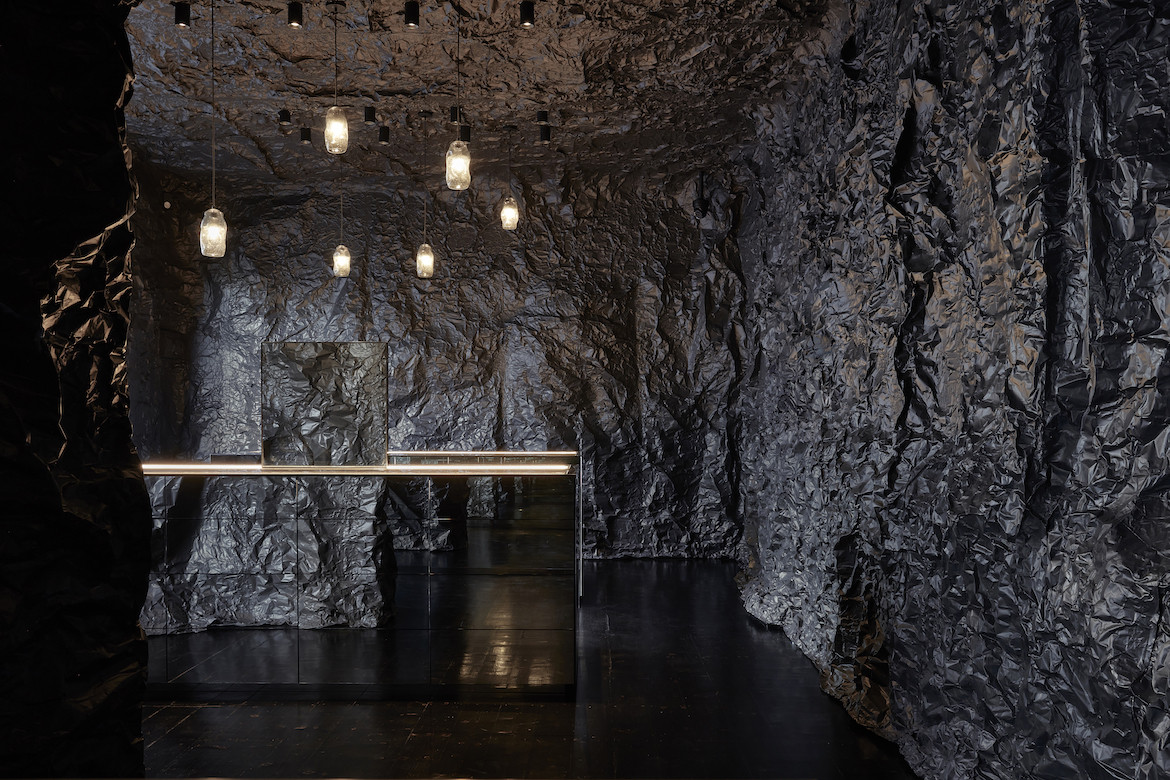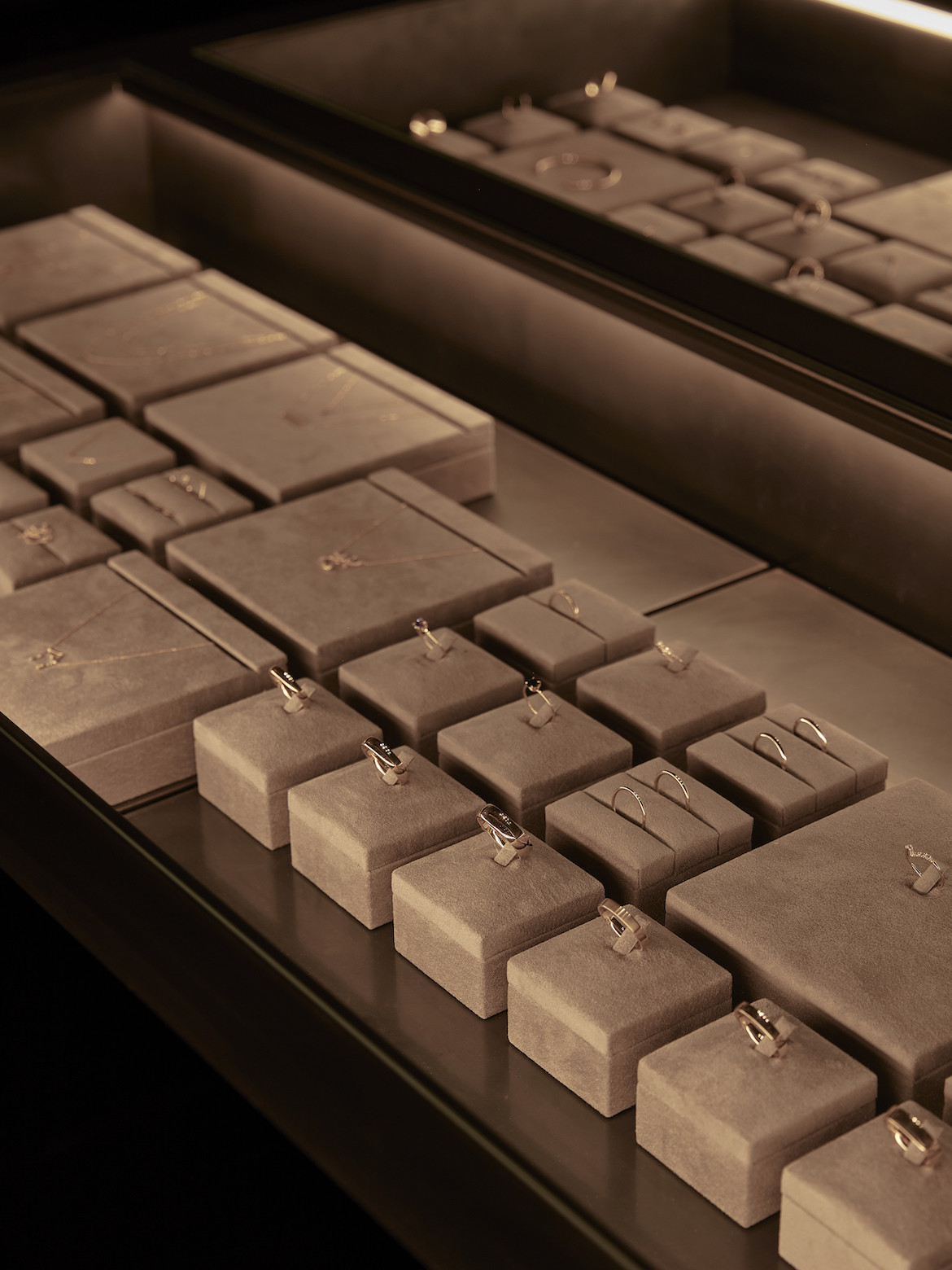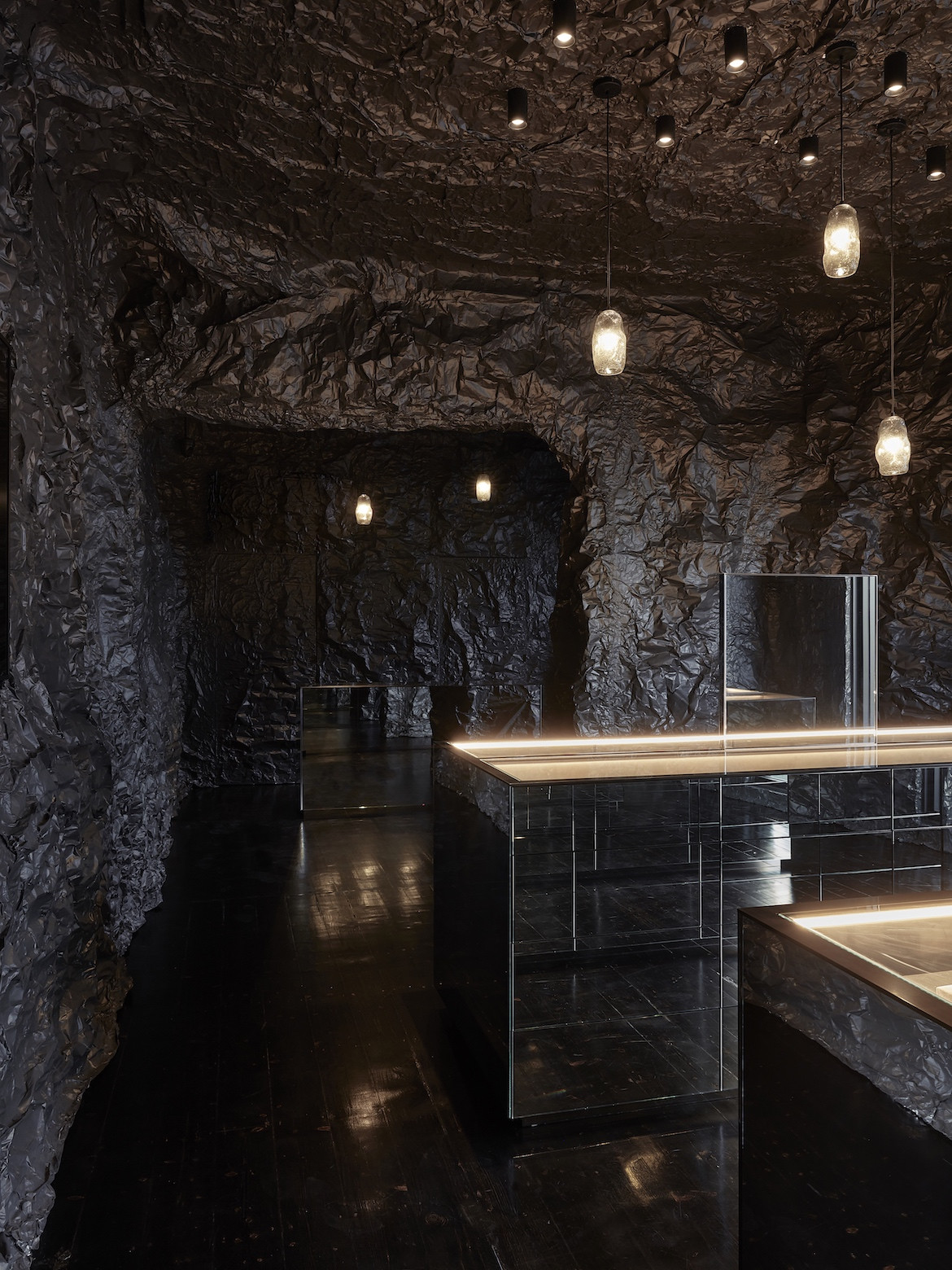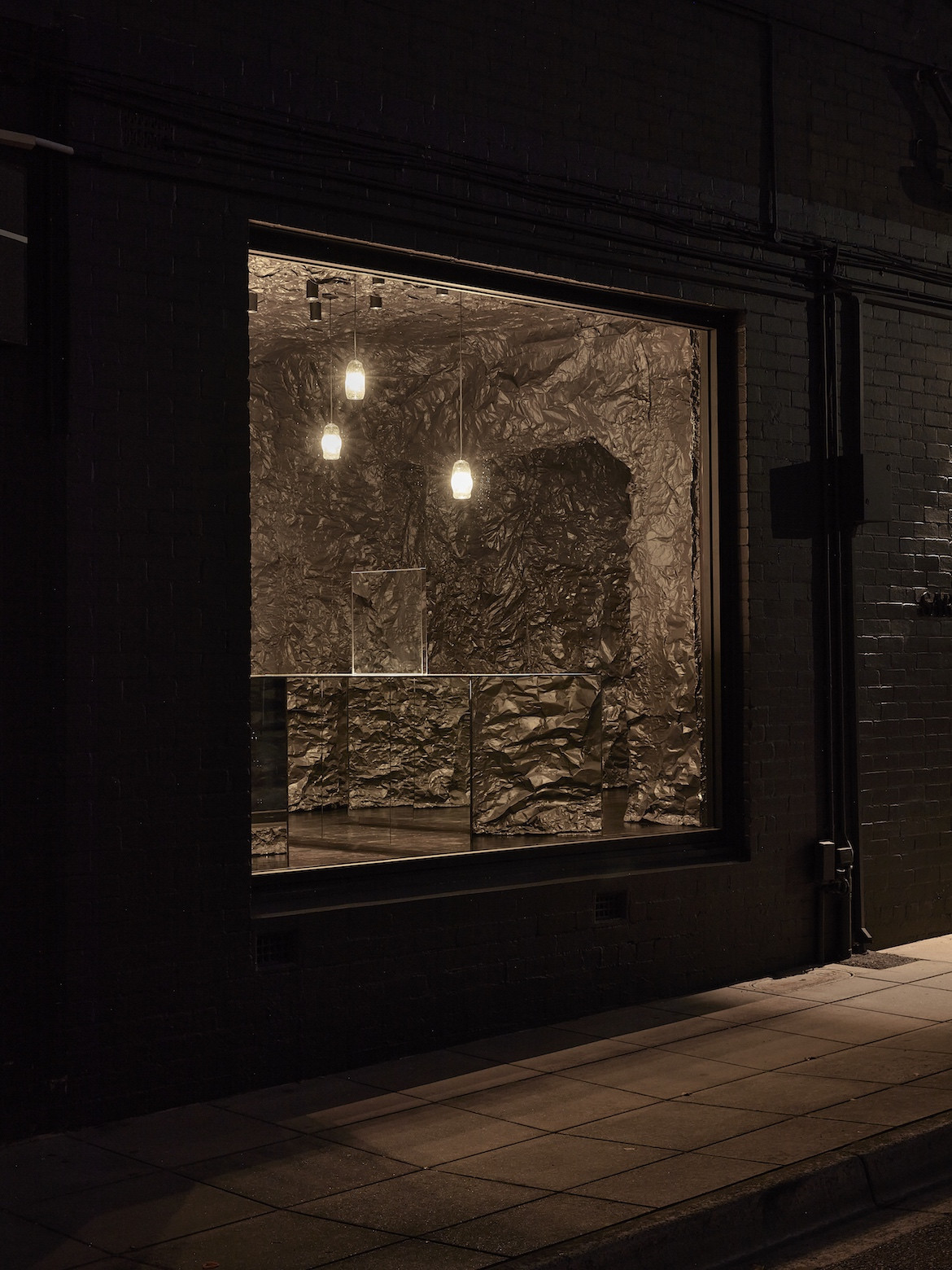A love letter to a city experiencing a year of hardship, Russell & George’s store for Sarah and Sebastian is an allegory for finding light in times of darkness.

From the street, the Sarah and Sebastian Armadale store is enigmatic and gallery-esque. A large window shows a glimpse into the underwater-like world, where black aluminium walls are slick yet covered in dips, angles and ridges, resembling a deep-sea cave shaped by currents. Light spills down from above onto the display cabinets, casting irregular shadows around the room.

“Light cannot exist without the dark. In this way it’s a love letter to a city going through a dark and difficult time and the fragility of the planet, but by using light it is also about beauty and hope,” says Ryan Russell, one half of Russell & George.
The beauty and hope in this space comes from Sarah and Sebastian jewellery, which glints and shines in the darkness like treasures at the bottom of the sea, subtly illuminated by purposeful lighting.

“The darkness and depth of the space creates a container for memory, the reference to the sea and natural world but also allows for light to be emitted, creating the space for the jewellery to exist and be discovered,” says Russell.
Responding to a variety of design challenges, Russell & George have created a portfolio as diverse as their clients. Founded by Ryan Russell and Byron George, the internationally recognised and award winning architecture and design agency celebrates a decade of operation this year.

The agency was awarded an honourable mention in both The Design Studio and The Shopping Space categories of the recent INDE.Awards.
“The process with all of our clients is always intuitive but backed by current global research”, says Russell. “We investigate their goals and aspirations, finding out things we can amplify and add focus to, things they may not have thought about”.

The striking, dark space wasn’t how the store was originally planned. In fact, prior to Covid-19, Russell & George had an entirely different fit-out planned, but lockdowns led to budget cuts and a new design being formulated. As it turns out, “the greatest innovations generally come through times of crisis,” says Russell, with the limitations becoming a blessing in disguise.
The aluminium structure was constructed as a standalone entity that was installed over the top of the existing fit-out, reducing landfill and also allowing for it to be entirely recyclable if removed in the future. The space avoids the churn cycle of trend-based retail as it is designed to last as long as the brand stays in the location.

The store has elicited a range of emotions in passers-by, says Russell.
“Our spaces tend to make people feel things and therefore bring out emotions in them. We quite often get feedback from visitors to our spaces for making their days a little brighter or more surprising, this space has been no different,” he says.
Ultimately, the Melbourne store is as much an artwork as it is a retail space, giving a satisfying sense of delight and discovery to those who stumble across it.

Join our collection to add your product.
Keep up to date with the latest and greatest from our industry BFF's!

Elevate any space with statement lighting to illuminate and inspire.

Vert, an innovative demountable pergola designed for urban greening, is reshaping the way we think about sustainability in urban architecture.

In this candid interview, the culinary mastermind behind Singapore’s Nouri and Appetite talks about food as an act of human connection that transcends borders and accolades, the crucial role of technology in preserving its unifying power, and finding a kindred spirit in Gaggenau’s reverence for tradition and relentless pursuit of innovation.

Within the intimate confines of compact living, where space is at a premium, efficiency is critical and dining out often trumps home cooking, Gaggenau’s 400 Series Culinary Drawer proves that limited space can, in fact, unlock unlimited culinary possibilities.

The $160 million transformation of 500 Bourke Street in Melbourne’s CBD has revitalised a 1970s Brutalist icon, originally designed by Godfrey & Spowers.

Australia’s only not-for-profit architectural practice, OFFICE, is supporting the residents of Victoria’s housing estates in their fight to save their homes and communities.
The internet never sleeps! Here's the stuff you might have missed

The Heffron Centre in Maroubra, Sydney, stands as a testament to how authentic public art powered by collaborative project teams can transform urban spaces.

Expert designer Jarrod Lim has collaborated with AI. While the process might have been interesting, the outcome is nothing less than remarkable.